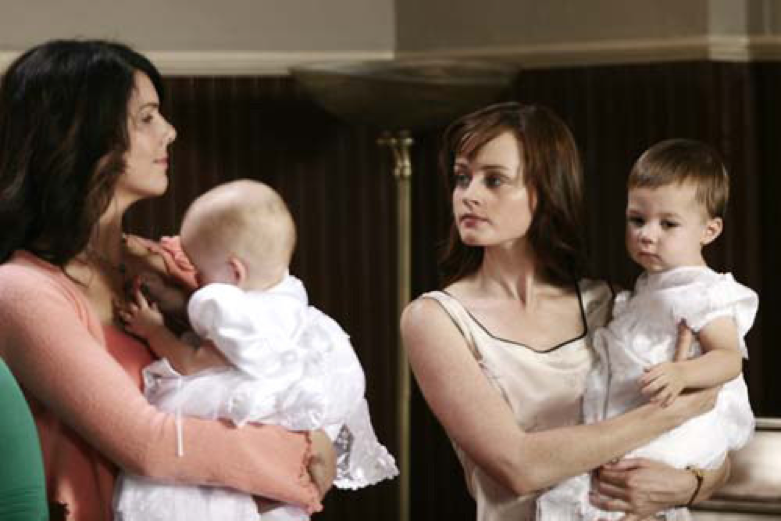Quickfire wit, endless coffee, and a healthy dose of boy drama – the Gilmore Girls “A Year In The Life” reunion was everything we’ve been waiting for… Except that ending (if you’ve seen it, you know what we’re talking about – if you haven’t, STOP READING and watch it and then come back because OH MY GOD.)
***SPOILER ALERT: LAST CHANCE TO LOOK AWAY!***
So what happens now? The whole show has been about single motherhood – the ups, the downs, the special bond between mother and daughter. But does Rory’s life really represent what it’s like for the 24% of children in the US living with a single mother ? Before Rory follows Lorelai’s single mother footsteps, let’s take a look at the reality of single motherhood in America and see how it compares to life in Stars Hollow.
1. Teens don't actually become single mothers that often.
Even though single motherhood is on the rise, teen pregnancy rates are dropping in the US. In 1984, when Rory was born, 13%of babies were born to teen moms. In 2014 it was only 6%. Most unmarried women having babies now are in their 20s. Looks like Rory (and Sherry) are much more representative of single moms than Lorelai in terms of age.
2. Eating out every single day is not an option for most single moms.
Coffee. Ice cream. Pop tarts. Red vines. Pizza. Lorelai and Rory never seem to stop eating. It might make for a great running gag on the show, but there are lots of single moms who can’t relate. 35% of families headed by a single mother are food insecure. Sure, there are times when there is ‘nothing’ in the Gilmore fridge, but this is usually remedied by a quick trip to Luke’s or Doose’s. (It’s not clear whether either of those places take SNAP, the modern version of food stamps, of which 25% of recipients are single parent families).
3. A huge amount of single mothers don't get the chance at the education Lorelai had, let alone Rory.
It was always pretty clear that Rory was the odd one out at Chilton. Most of her friends came from families a lot more similar to Rory’s grandparents than her mom (which makes sense seeing as they were the ones who funded her studies.) Not all children of single parents are so lucky to have a set of grandparents like Emily and Richard – only about 15% of them finish college by 24, compared to 40% of children from two-parent families. Even Lorelai’s experience is a standout in comparison to most teen moms – only 40% finish high school. Let’s not even talk about the whole Rory-going-to-Yale part.
4. And if childcare everywhere was like Stars Hollow's must be, single motherhood would be walk in the park.
Stars Hollow is probably the biggest example of creative economics in the show. Like most fictional small towns we’re never told exactly how the town manages to function. More importantly, the town is Lorelai’s support network. This network appears to allow Lorelai to avoid paying for childcare or transportation - everything is in walking distance. Two parent families in Connecticut spend an average of 12% of their income on childcare. We come in too late in Rory’s life to see the town in action, but it takes a lot of ‘pitching in’ for a teenage maid to manage a working mother’s schedule without spending a lot on childcare.
5. The bit that does add up: much as all our jaws dropped at those last four words, Rory was statistically pretty likely to become a single mom herself.
Children of teen moms are 20% more likely to be teen moms themselves. We dodged that bullet with Rory, but it seems to have come back to haunt her. Statistically, Rory is better off than her mom because of her age and education, but Logan seems like he’d be about as present as Christopher was. The reunion only passingly dealt with the angst of having an absent father, which was entirely absent from the original show. Maybe Jess will swoop in like Luke to save the day?
Disclaimer: This writer is strictly #TeamJess.


